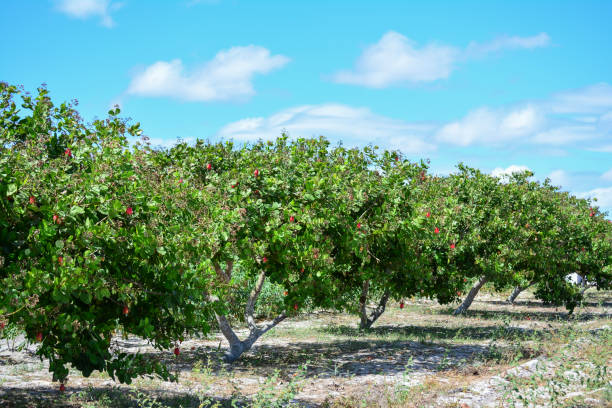
Cashew agriculture
The processing of cashew involves the following steps :
- Preliminary cleaning
- Roasting
- Shelling and separation
- Drying
- Peeling
Preliminary cleaning of cashew nuts is done by manual picking of large objects and by sieving. The cleaned cashew nut is roasted in open pan or earthen ware or rotary cylinder or hot oil bath. The first two methods are simple and cheap, but they are time consuming and lead to poor recovery of CNSL (Cashew Nut Shell Liquid). The rotary cylinder method is more hygienic and efficient, but a major portion of the CNSL would be lost. The hot oil bath process combines good roasting and recovery of shell liquid. The cleaned cashew nuts are placed in wire baskets and immersed in a tank containing CNSL, boiling at a constant temperature of about 180-200°C for about 60 to 90 seconds. The CNSL in the tank should be stirred continuously to avoid local overheating and excessive polymerization and clogging. However, the hot oil bath processing is costlier, and is resorted to only by a few processors. The most common method adopted is roasting by rotary cylinder method. After roasting, the shells are removed and the nuts extracted manually. In manual shelling, recovery of whole kernels is more compared to the mechanical shelling. The kernels are dried in hot air chambers which facilitates peeling of the outer coating or testa. To prevent breakage, the kernels are to be handled very carefully, as they are brittle at this stage. The shelling percentage of cashew varies between 20-25.
More about CASHEW fruit: